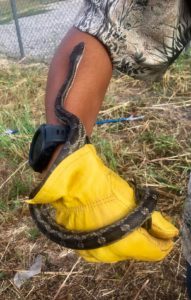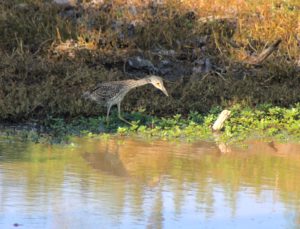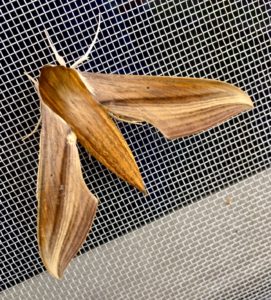Weeks 15 & 16:
Pond surveys for waterfowl will begin soon, so I have been evaluating the various options on the property in order to select a subset of ponds that appear to provide the essential habitat conditions for waterfowl. I began the process by calculating the surface areas of each of our larger ponds using Google Earth and then measured depths by means of a kayak and a rope knotted by foot and weighted at one end, determining the maximum depth and estimating a rough average by halving the maximum. These two numbers allow me to then calculate volume, measured as acres-feet. I also looked for aquatic vegetation and determined species present.
Once the sample of ponds is established, I will begin monitoring each pond in person one morning per week and recording waterfowl species and numbers of each present. I also plan to post cameras in advance to collect time-lapse photos and will then compare the data from the two survey methods, both to test the effectiveness of the cameras as a waterfowl survey tool and hopefully, to maximize sampling accuracy. So far, I do not have any confirmed waterfowl sightings on the farm this season, but I look forward to observing the variety of migrating birds as fall approaches.
In wildlife encounters last week, a medium-sized Western rat snake (Pantherophis obsoletus) was retrieved from the inside wall of a well that was about to be capped; a juvenile yellow-crowned night heron (Nyctanassa violacea) was accomplishing the equivalent of shooting fish in a barrel, specifically with crayfish, at one of our small ponds drying up; and a tersa sphinx moth (Xylophanes tersa) was holding onto my window against the windy conditions (which reneged on the promise of rain that day). I also collected an interesting insect from a pond while kayaking, originally thinking it was a rather confused walking stick. After doing a bit of research, I discovered that it is an aquatic insect of the genus Ranatra, in the family Nepidae, members of which are commonly called water scorpions, in part due to the rear appendage extending out from the lower abdomen that resembles a tail. This appendage is actually a set of hollow, siphoning tubes that the insect lifts out of the water in order to breathe. Unlike the arachnids after which they were named, water scorpions can’t sting you with their bum snorkel, but some species of Nepidae can supposedly deliver a painful bite, so handle with care if found. It is thought that mosquito larvae make up a significant portion of the Ranatra spp. diet, along with other aquatic invertebrates, so I am a new fan.
Until next time,
Dani Miller
Wildlife Biologist
Stiles Farm Foundation






